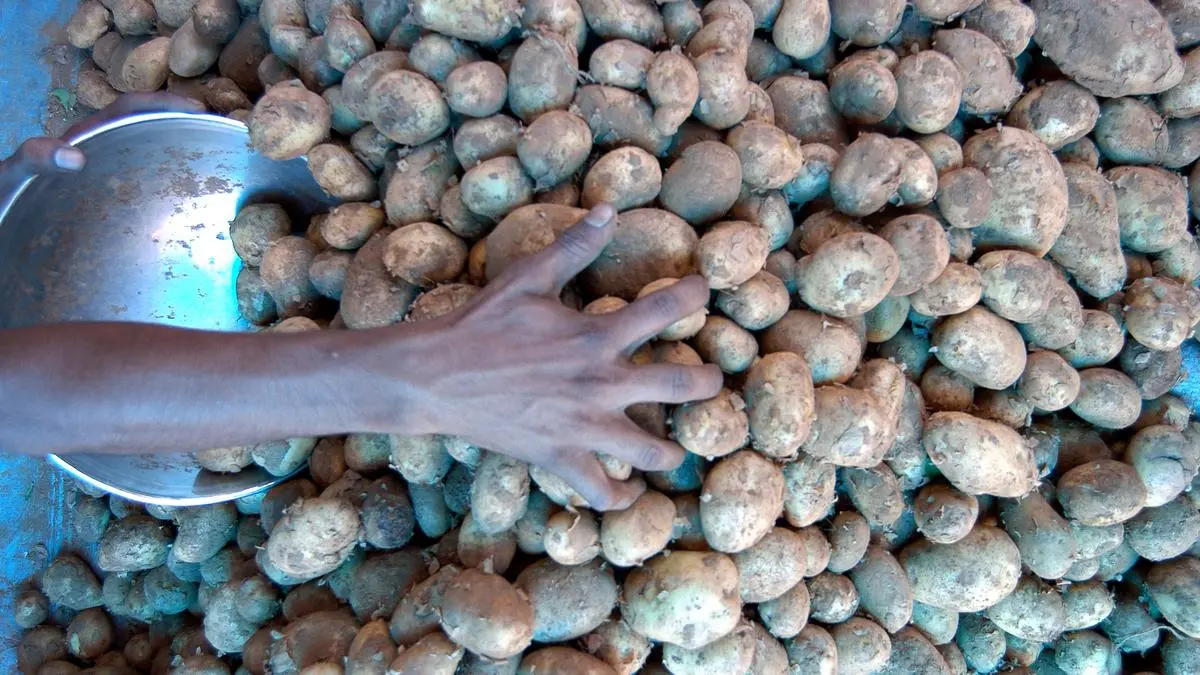
Between 2019 and 2024, the export value of frozen potato products globally soared from $7.7 billion to $13.2 billion
| Photo Credit:
MUSTAFAH KK
India and China have turned net exporters of frozen processed potato products from net importers, with the global potato market undergoing a significant transformation, according to RaboResearch.
An agriculture research arm of Rabobank, RaboResearch, pointing to the world potato map it published recently, said the global potato market is experiencing a significant transformation, with frozen potato products taking centre stage
This comes on the heels of consumers embracing the convenience of fries and other processed potato products. This has resulted in international trade skyrocketing during 2019-2024, reshaping the landscape of potato production and processing.
Beyond traditional regions
No longer limited to traditional potato-consuming regions like North America and northwestern Europe, frozen fries have become increasingly popular in other areas, including the Middle East and Asia. This has driven a major change in the global potato market – particularly in the processed products segment.
Cindy van Rijswick, Global Strategist for Fresh Produce at RaboResearch, said China and India are strengthening their competitive edge, transitioning from net importers to net exporters.
“With impressive growth rates, both countries have expanded their domestic processing capacity, serving local and regional markets. China’s potato processing industry reached an impressive compound annual growth rate of 79 per cent between 2019 and 2024, and India and Egypt followed suit with CAGRs of 45 per cent and 16 per cent, respectively, she said.
These emerging players continue expanding their processing capacity and export volumes, capitalising on rising demand in the Middle East and Asia, said RaboResearch.
Soaring exports
Between 2019 and 2024, the export value of frozen potato products globally soared from $7.7 billion to $13.2 billion. “Both a growing market and higher prices drove the surge in export value, as costs for growing and processing potatoes increased substantially across the world,” said Rijswick.
The growth was also fueled by increased imports in countries such as the US, the UK, Mexico, Saudi Arabia, Germany, and Spain.
As potato processing expands across Europe, North America, and Asia, the industry now faces the challenge of ensuring that demand keeps pace with the rapidly growing supply of frozen processed products.
Global potato production was estimated at 372 million tonnes (mt) in 2024, with China and India leading the charge. As these nations continue to expand their shares, the European Union and the United States face challenges in increasing yields and production areas, as their current yields already exceed the global average, said RaboResearch.
Netherlands dominance under pressre
“Rising costs have affected every player in the global potato supply chain, from growers to processors to consumers,” said van Rijswick.
Prices of seed potatoes, raw potatoes, energy, and other inputs have driven up production, processing, storage, and distribution costs. “The potato market is navigating turbulent waters, but demand remains strong,” she said.
The global leader in seed potato exports is the Netherlands, accounting for about half of global exports. However, maintaining this dominant position will be increasingly challenging, due to regulatory constraints on resources (like crop protection and water quality) and climate changes, said RaboResearch.
Published on September 3, 2025
